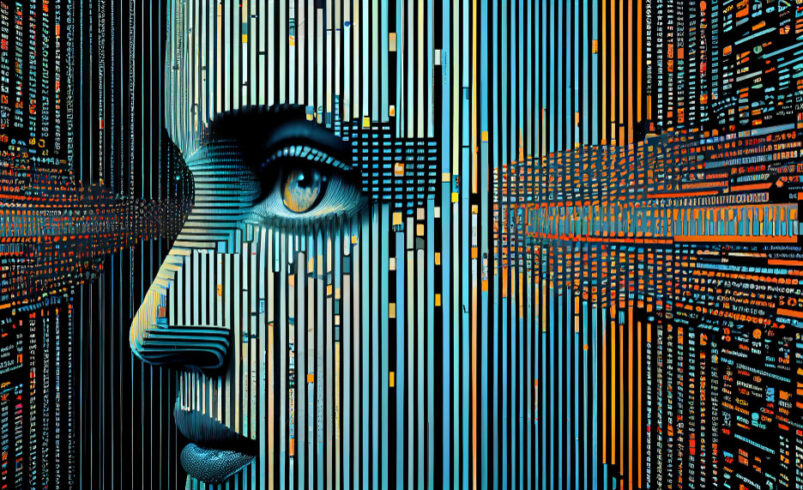
Why Has DALL-E’s AI Art Gone So Viral So Fast?
Over the past year, DALL-E has become one of the most talked about AI systems. DALL-E is an AI system created by OpenAI that can generate realistic images and art from a text description.From cute cats to surreal landscapes, DALL-E’s captivating images have captured people’s imaginations and demonstrated the rapid progress of AI.
But why has DALL-E gone so viral? In this blog post, we will explore the key reasons why DALL-E has become so popular and broadly used.
DALL-E’s Impressive Image Generation Capabilities
The primary driver of DALL-E’s popularity is its ability to create remarkably realistic and diverse images from text prompts. Unlike previous generative image models, DALL-E demonstrates creativity, understanding of visual concepts, and rendering images with coherence and high fidelity.
Here are a few examples of what makes DALL-E’s image generation so impressive:
Diverse Styles and Subjects
DALL-E can render images in a wide range of artistic styles, from oil paintings to pencil sketches. It can also generate images of almost anything you describe – people, animals, objects, scenes etc.
Photorealism
Many of DALL-E’s images are eerily realistic – full of convincing fine-grained details that mimic the visual complexity of real-world imagery. The photorealism across diverse subjects is a substantial leap from previous AI art models.
Creative Interpretation
DALL-E often demonstrates creativity in visually interpreting text prompts. Instead of just fabricating imagery, it seems to understand concepts and themes to generate images that cleverly depict the desired subject.
The combination of these generation capabilities enables incredible flexibility and visual storytelling that excites people’s imaginations.
Streamlined User Experience
Another big reason for DALL-E’s popularity is that using it is simple and accessible to anyone. The user just types a text description, and DALL-E handles the complex image generation behind the scenes. After a short wait, it presents a selection of images tailored to the prompt.
This streamlined user experience broke down barriers that previously made advanced AI systems hard to access for average people. Enabling anyone to essentially “manifest” their creative ideas or curiosities into images with a few keystrokes makes for addictive interaction.
Shareability
DALL-E also gained significant viral traction because its images make highly engaging, shareable social media content. People enjoy posting surreal, funny, or aesthetically pleasing images generated with DALL-E to spark discussion and reactions. This organic social spread exposed new audiences to DALL-E and fueled its hype.
Memes
On a related note, DALL-E has become very popular for memes. People generate and share memes with AI-created imagery customized to various viral joke formats. As memes are inherently shareable, this has massively grown DALL-E’s cultural footprint.
Progress in AI Capabilities
From a technology perspective, DALL-E also signifies an important milestone in AI progress. Its advanced image generation wowed experts and captured headlines for pushing the boundaries of what AI can create.
As AI that can mimic human visual creativity garners significant attention and acclaim, it further propelled DALL-E’s notoriety. It became an iconic case study for broader AI breakthroughs happening.
OpenAI’s Influence
Because DALL-E came from such a famous AI lab in OpenAI, it also immediately commanded the spotlight. Having an existing reputation for advancing AI surely bolstered interest and trust in this novel system they unveiled.

Ongoing Improvements – DALL-E 2 and Beyond
OpenAI has sustained DALL-E’s popularity by rapidly iterating and enhancing its capabilities.
Notable upgrades include:
DALL-E 2
The recently released DALL-E 2 model builds on the original for more realistic and intricate image generation with better consistency and control. Upgrades like 50X the data and training capacity demonstrate OpenAI’s ongoing progress.
Finetuning
OpenAI has finetuned DALL-E’s original model with more data for specific niches like pets, bikes, and furniture to boost its aptitude for detailed renderings.
Commercial API Access
After many requests, OpenAI enabled businesses to license access to DALL-E for developers and commercial use. This will expand its reach into more mainstream applications.
Judging by OpenAI’s relentless pace of innovation so far, we can expect even more impressive DALL-E upgrades down the road that perpetuate public enthusiasm.
Concerns Around AI-Generated Content
However, DALL-E’s hype is not without valid concerns about how AI, like it, should be guided positively. As the technology matures and becomes more accessible, key questions around mitigating misuse and ensuring it helps humans need more discussion to align innovations with the public good.
Some top concerns that have at least partially tempered the fervor around DALL-E include:
Difficult Content Control
Safeguards around blocking inappropriate or misleading content from DALL-E remain challenging to implement effectively. Critics argue that OpenAI rushed to offer free public access before resolving this complex issue.
Intellectual Property
Artists have raised legal questions on who owns imagery synthesized from data of real artwork without consent, along with requests for better attribution. Copyright precedent around AI output remains unclear and divisive.
Data Bias
There are outstanding requests around OpenAI auditing and improving DALL-E’s training data diversity to address bias and stereotyping issues that arise in generating content about marginalized groups. Community participation in data sourcing could help, too.
While enthusiastic about DALL-E’s unprecedented creativity, many advocate for pausing commercialization until critical ethical, legal and social implications see more systematic review and solutions to uphold public interests over profits.
The Future with DALL-E
Responsible guiding of future progress remains imperative, but at its core, DALL-E represents a profoundly beneficial advance for humanity. Its viral popularity results directly from the innate human awe and joy at richer interfaces for bringing imagination and creativity to life.
We have much normalization yet around AI co-creating alongside us, but the overwhelmingly positive public response to DALL-E hints at a promising future fueled by human-AI collaboration.
What might tomorrow look like as we refine and share these tools, blending our complementary strengths for art, communication, connection, humor, and collective knowledge? The possibilities span from personalized medicine to enhanced education through explorable visual explanations to 3D-printing masterpiece replicas in every home.
By illuminating potential while proactively addressing risks, DALL-E can serve as a transformative catalyst for human empowerment. Our future looks brighter with AI like DALL-E augmented to amplify creativity, actualize dreams and connect cultures across physical divides as the ultimate creative equalizers.

Conclusion
In summary, DALL-E has quickly become a pop culture phenomenon due to its impressive image generation capabilities, engaging user experience, meme potential, and cutting-edge innovation. However, discussions continue around appropriate controls and positive societal impact to ensure this technology reaches its full potential to empower humanity with responsible guidance. What are your thoughts on AI like DALL-E as creators, consumers or critics contemplating future implications?
















